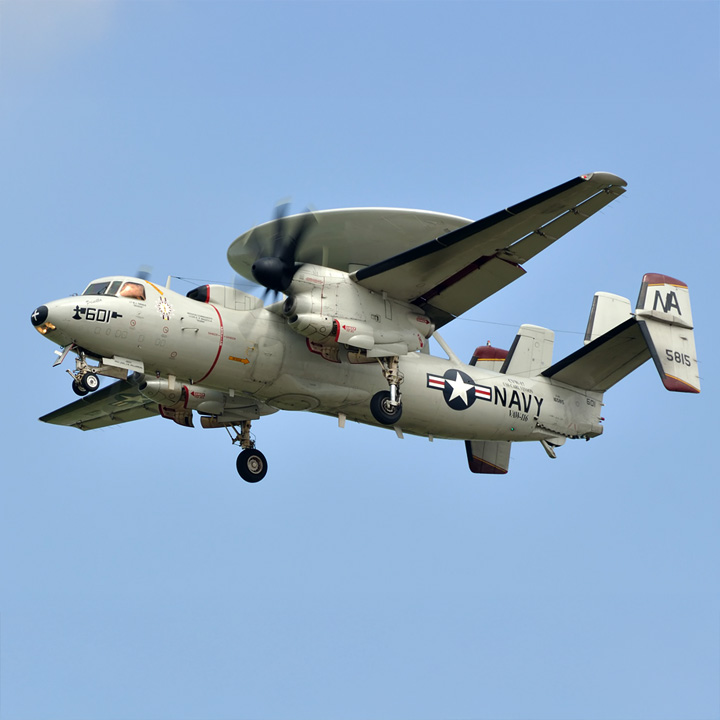Aircraft On Display
Aircraft On Display
The Toledo Air Show features many military and civilian aircraft on display for patrons to enjoy. Below is a partial list of those aircraft, which are subject to change. Check back as more aircraft are being added.
Civilian Aircraft Displays
B-25J Mitchell Bomber
"Georgie's Gal" started her life at a manufacturing plant in Kansas City, being accepted into service in 1945. She has been bought and sold numerous times since being decommissioned and entering civilian service, and has previously borne the names "The Devil Made Me Do It," "Man Of War," and "Martha Jean."

Stearman PT17
The Stearman (Boeing) Model 75 is a biplane formerly used as a military trainer aircraft, of which at least 10,626 were built in the United States during the 1930s and 1940s.[1] Stearman Aircraft became a subsidiary of Boeing in 1934. Widely known as the Stearman, Boeing Stearman or Kaydet, it served as a primary trainer for the United States Army Air Forces, the United States Navy (as the NS and N2S), and with the Royal Canadian Air Force as the Kaydet throughout World War II. After the conflict was over, thousands of surplus aircraft were sold on the civilian market.
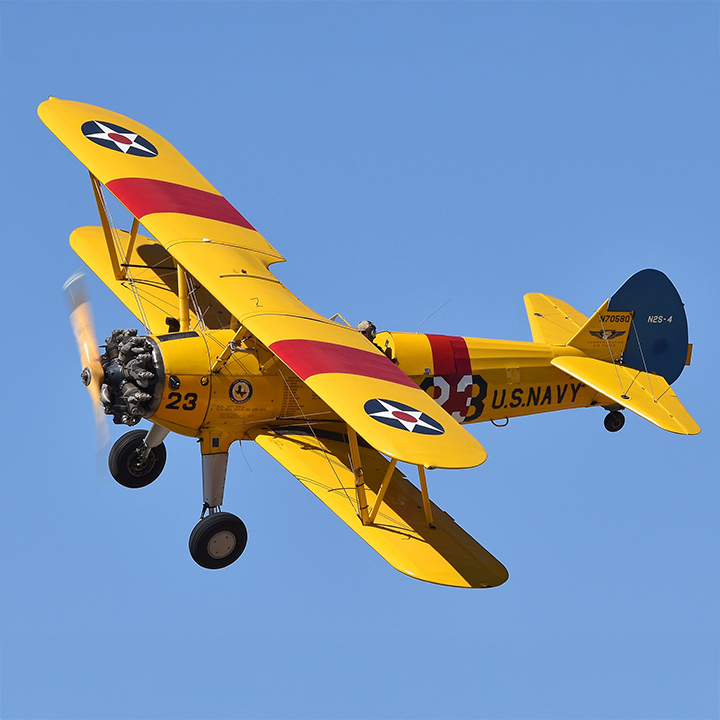
Ford Tri Motor
The Ford Trimotor, affectionately known as the "Tin Goose," is a historic aircraft that revolutionized air travel in the 1920s and 1930s with its reliable all-metal design and capacity for passenger service. Renowned for its rugged performance and versatility, the Trimotor played a key role in pioneering commercial aviation and continues to captivate aviation enthusiasts today.
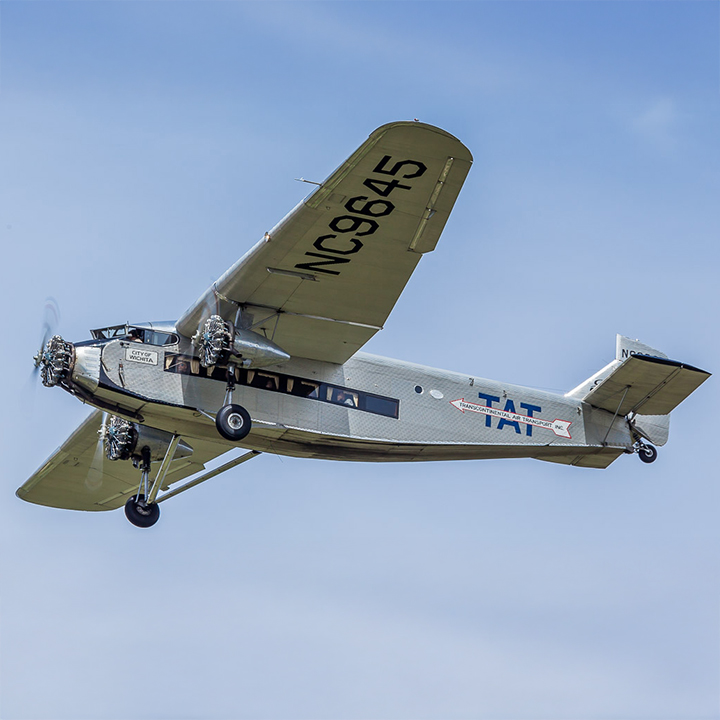
C-47 Skytrain
WWII Douglas C-47 Skytrain "Hairless Joe" named after Lt. Col. Richard E. Cole's C-47 Skytrain he piloted in China-Burma Theatre. Cole is the last surviving member of the Doolittle Tokyo Raiders and was co-pilot to Jimmy Doolittle.
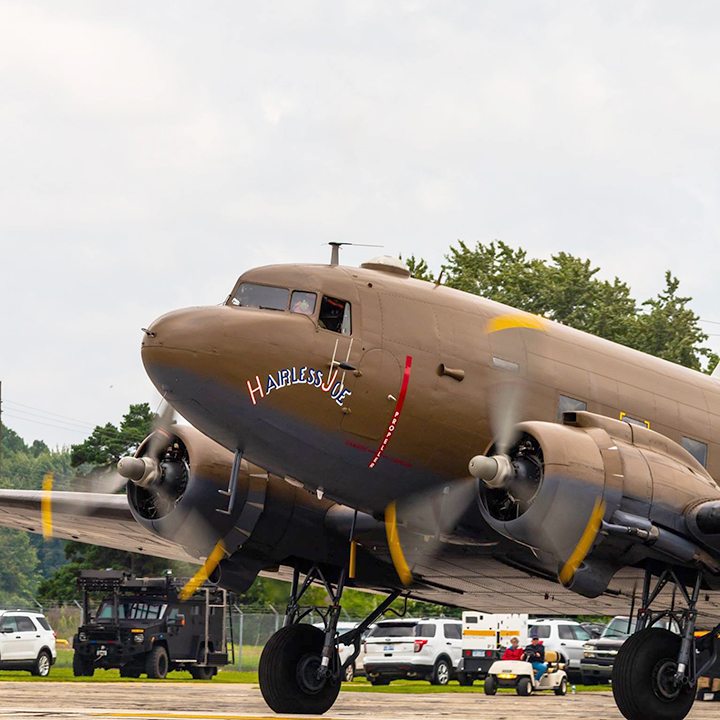
Military Aircraft Displays
F-35A Lightening
The Lockheed Martin F-35 Lightning II is a family of single-seat, single-engine, stealth multirole fighters designed to perform ground attack, reconnaissance, and air defense missions with advanced survivability and situational awareness. Developed through a multinational program led by the United States, the F-35 incorporates cutting-edge stealth technology, sensor fusion, and networked capabilities. It comes in three variants—conventional takeoff and landing (F-35A), short takeoff/vertical landing (F-35B), and carrier-based (F-35C)—to meet the needs of the Air Force, Marine Corps, and Navy. The F-35 is poised to be the backbone of allied airpower for decades to come.
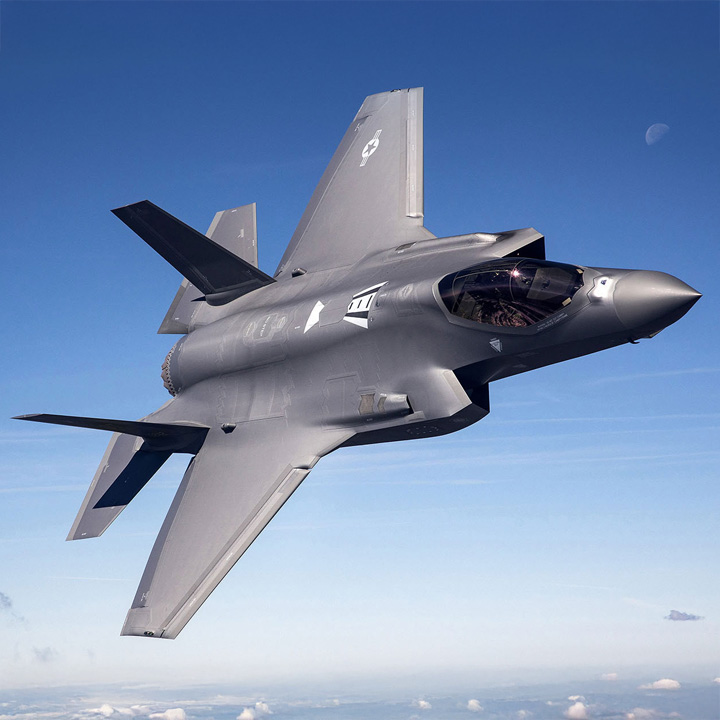
C-17 Globemaster
The Boeing C-17 Globemaster III is a large military transport aircraft. It was developed for the United States Air Force (USAF) from the 1980s to the early 1990s by McDonnell Douglas. The C-17 commonly performs tactical and strategic airlift missions, transporting troops and cargo throughout the world; additional roles include medical evacuation and airdrop duties. It was designed to replace the Lockheed C-141 Starlifter, and also fulfill some of the duties of the Lockheed C-5 Galaxy, freeing the C-5 fleet for outsize cargo.
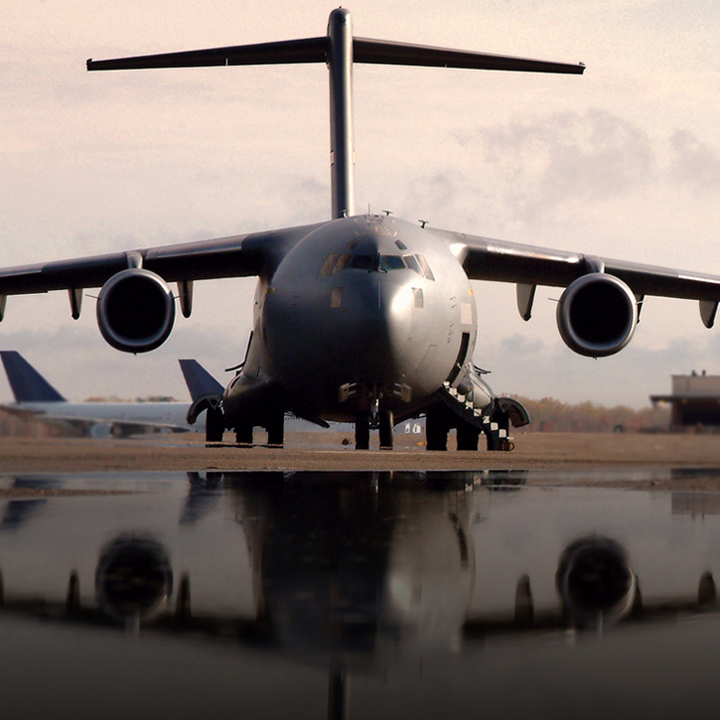
KC-135 Stratotanker
The Boeing KC-135 Stratotanker is a military aerial refueling aircraft. Both the KC-135 and the Boeing 707 airliner were developed from the Boeing 367-80 prototype. It is the predominant variant of the C-135 Stratolifter family of transport aircraft. The KC-135 was the US Air Force's first jet-powered refueling tanker and replaced the KC-97 Stratofreighter. The KC-135 was initially tasked with refueling strategic bombers, but was used extensively in the Vietnam War and later conflicts such as Operation Desert Storm to extend the range and endurance of US tactical fighters and bombers.
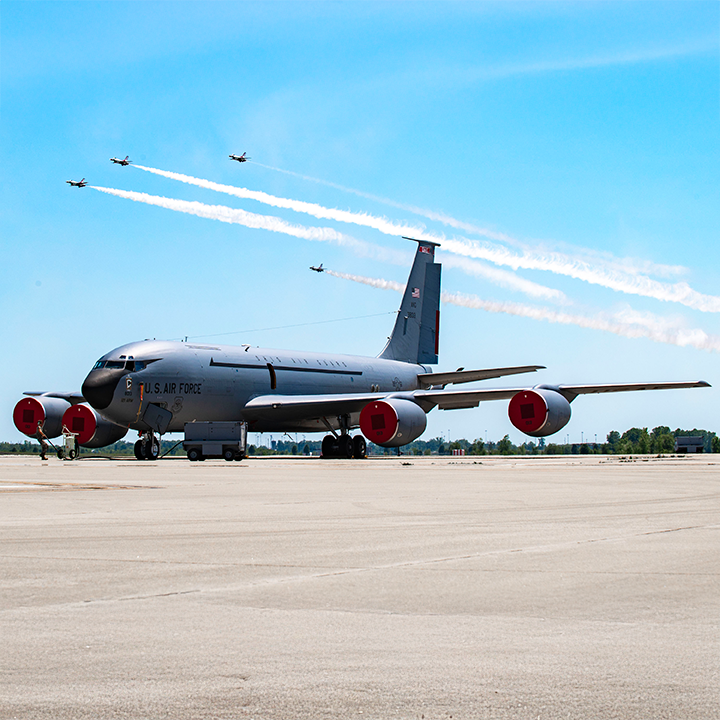
T-38 Talon
The Northrop T-38 Talon is a two-seat, twinjet supersonic jet trainer. It was the world's first supersonic trainer and is also the most produced. The T-38 remains in service as of 2018 in several air forces. The United States Air Force (USAF) operates the most T-38s. In addition to training USAF pilots, the T-38 is used by NASA. The U.S. Naval Test Pilot School is the principal US Navy operator (other T-38s were previously used as USN aggressor aircraft until replaced by the similar Northrop F-5 Tiger II). Pilots of other NATO nations fly the T-38 in joint training programs with USAF pilots. As of 2018, the T-38 has been in service for over 50 years with its original operator, the United States Air Force.
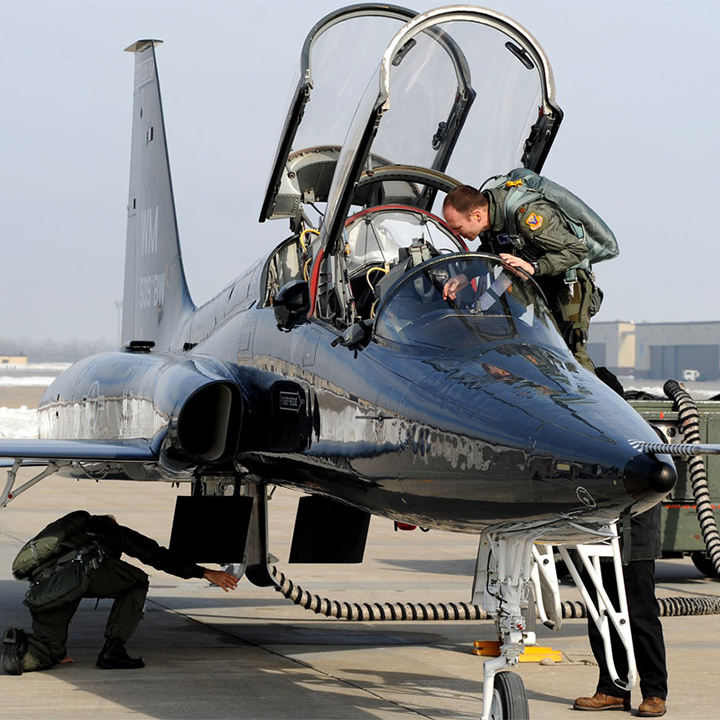
A-10 Warthog
The Fairchild Republic A-10 Thunderbolt II is a single-seat, twin turbofan engine, straight wing jet aircraft developed by Fairchild-Republic for the United States Air Force (USAF). It is commonly referred to by the nicknames "Warthog" or "Hog". The A-10 was designed for close air support (CAS) of friendly ground troops, attacking armored vehicles and tanks, and providing quick-action support against enemy ground forces. It entered service in 1976 and is the only production-built aircraft that has served in the USAF that was designed solely for CAS.
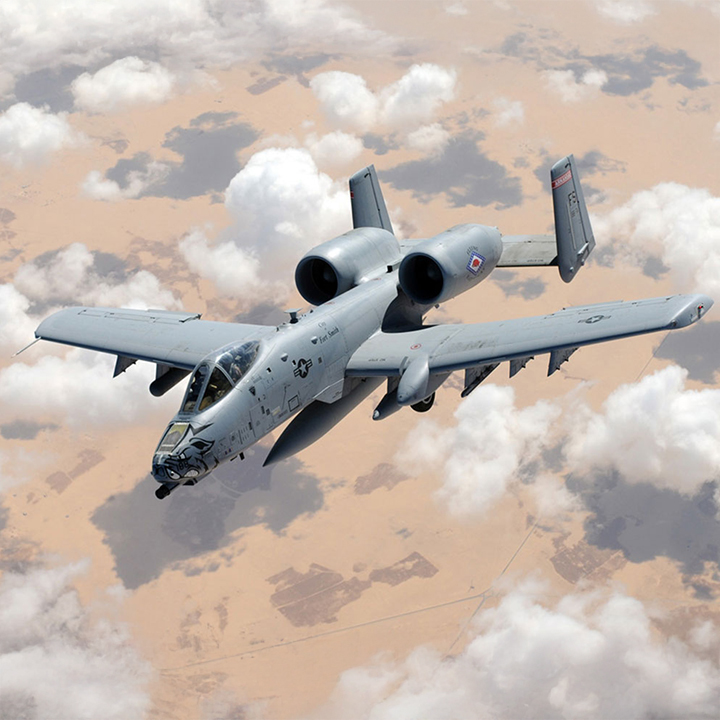
F-16 Fighting Falcon
The General Dynamics F-16 Fighting Falcon is a single-engine, supersonic, multirole fighter aircraft originally developed for the United States Air Force. Designed as a lightweight, highly maneuverable combat jet, the F-16 features a frameless bubble canopy, side-stick controller, and fly-by-wire flight control system. First introduced in the late 1970s, the F-16 has been widely adopted by air forces around the world and remains one of the most versatile and widely produced fighter aircraft. It has also been used by the U.S. Air Force Thunderbirds demonstration team since 1983.
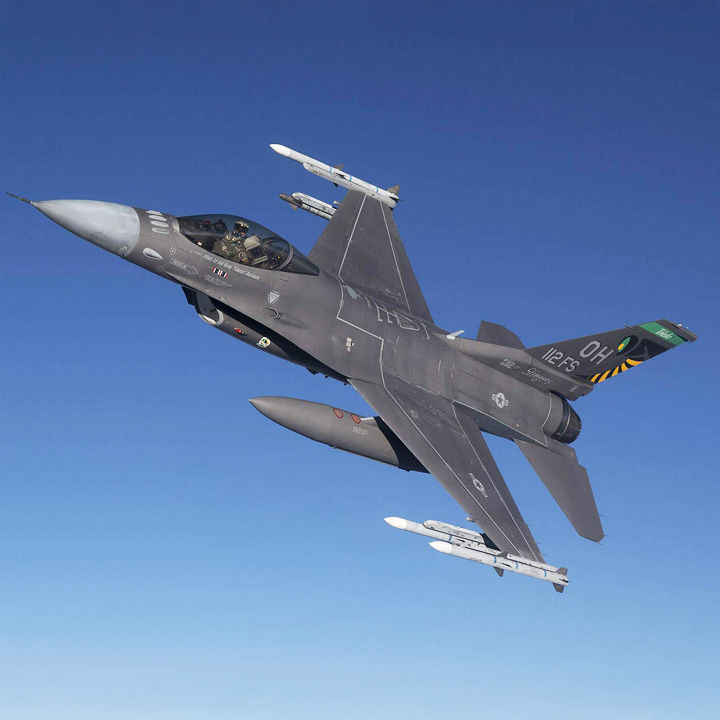
C-130J Hercules
The Lockheed C-130 Hercules is a four-engine, turboprop military transport aircraft designed for cargo, troop transport, and medical evacuation. Introduced in the 1950s, the C-130 has become one of the most versatile and widely used military aircraft in history, serving with air forces around the world. Known for its rugged design, short takeoff and landing capabilities, and ability to operate in austere conditions, the C-130 has been adapted for numerous specialized roles, including airborne assault, search and rescue, and aerial refueling. It has been a cornerstone of U.S. military airlift operations for decades.
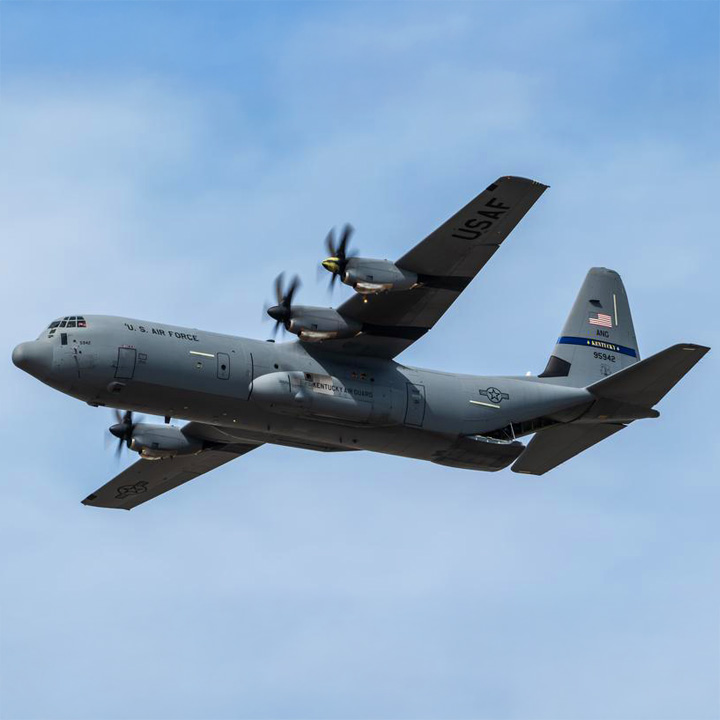
UH-60M Blackhawk
The Sikorsky UH-60M Black Hawk is a twin-engine, medium-lift utility helicopter designed for tactical transport of personnel and equipment, medical evacuation, and support missions. An upgraded variant of the original UH-60, the UH-60M features advanced avionics, improved engines, and enhanced lift and survivability capabilities. Widely used by the U.S. Army and allied nations, the Black Hawk is known for its versatility, reliability, and ability to operate in a wide range of environments—from combat zones to disaster relief missions—making it a vital asset in modern military operations.
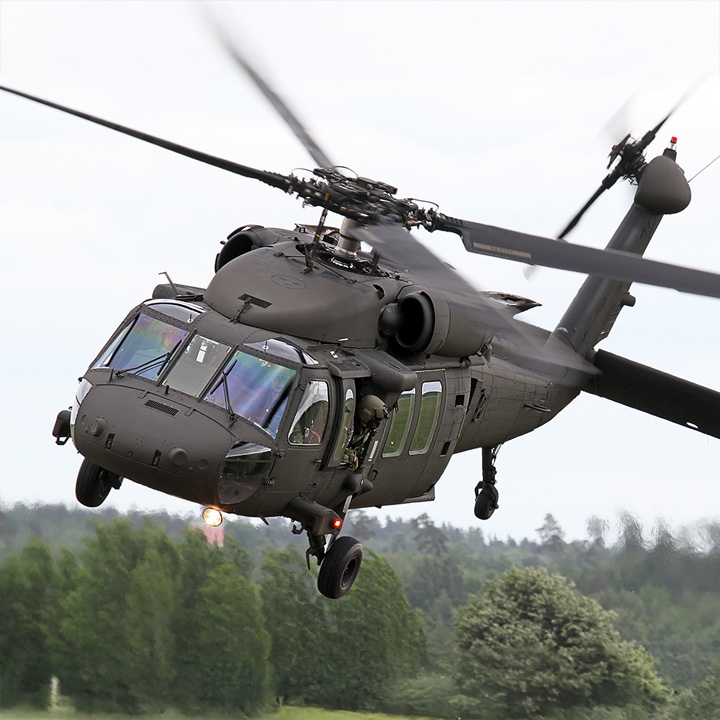
E-2C Hawkeye
The Northrop Grumman E-2C Hawkeye is a twin-engine, carrier-capable airborne early warning and control (AEW&C) aircraft designed to provide all-weather surveillance, command and control, and communications for naval and joint operations. Distinguished by its large rotating radar dome mounted above the fuselage, the E-2C can detect and track targets at long range, direct fighter aircraft, and manage battle space operations. Operated by a crew of five, the Hawkeye has been a vital component of the U.S. Navy’s carrier air wings since the 1970s, ensuring situational awareness and coordination in complex operational environments.
